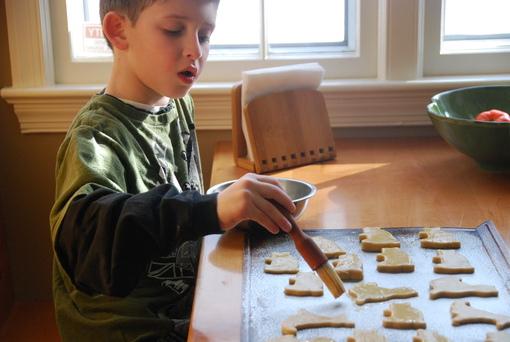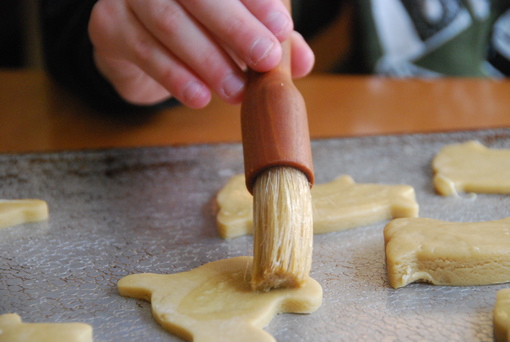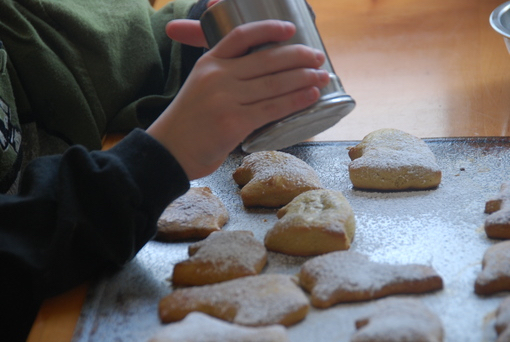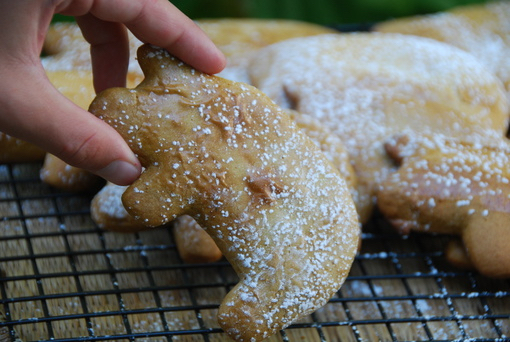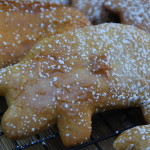I can finish a normal sized Concha, 4 to 5″ round, in exactly four bites. If it has been a long time since I had one or if I am very hungry, maybe three bites. Ok, I admit it, sometimes two bites. But never one.
Conchas are named after the shape of their sugar topping, which resembles a seashell. Conchas do have a hardened crust, but it is sugary, thick, crispy and crumbles right into your mouth as you take a bite. Right after you brake through that crust, there is a fluffy, soft, sweet roll made with flour, butter, yeast and eggs. With such a pleasing experience, no wonder it is one of Mexico’s most favorite sweet rolls or pan dulce.
I have seen some in bakery shops around DC, but they just don’t taste like the ones we love at home. So on our most recent trip to Valle de Bravo in Mexico, I ventured with my boys, and many of their cousins and aunts, into a panadería, or bread shop. They make such incredible conchas, it makes me wish I had a bigger mouth to eat them each in a single bite.
This panadería, named Santa María, like most in Mexico, has 2 daily shifts for making fresh breads of all sorts. On the second shift of a Monday afternoon, Mrs. Agustina López, who runs the bakery, saw my little battalion and announced that they give baking classes to little cooks.
As the kids got a very hands-on class from her son Félix, master baker there, I soaked up all their secret ingredients and techniques, which they were very happy to share.
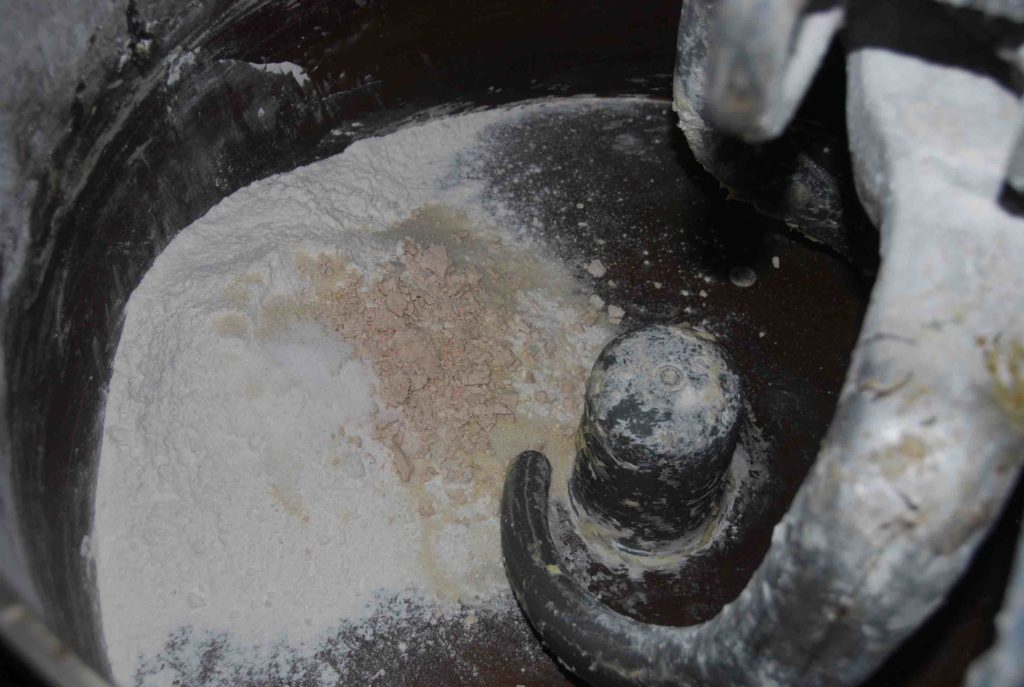
First of all, they have a beautifully aged and seasoned giant mixer. The kids took turns throwing (yeah, throwing) the flour, salt, yeast, water…
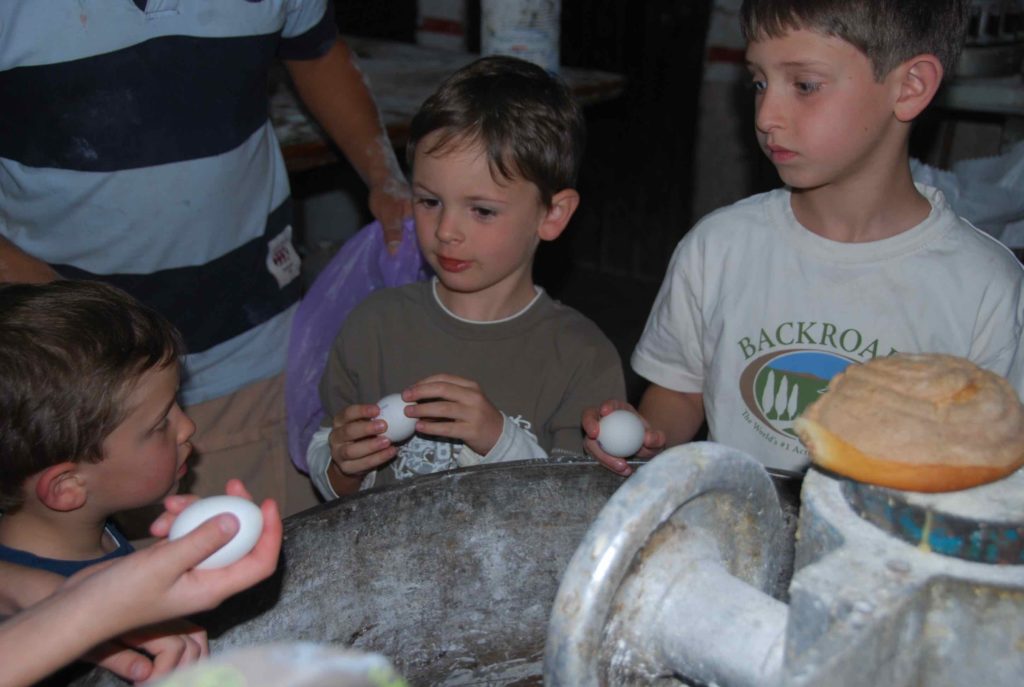
They were attempting to also throw the eggs into the mixer. See? I had to put my camera down to convince them that really, those eggs needed to be cracked first, though it seemed more fun to throw them all in. Just like that.
After, the roaring giant mixer helped knead a soft, gooey, elastic and very moist batter.

Félix showed them what that dough felt like. Then he left it to rise, and took it to another giant piece of equipment: a batter cutter.
Juju seemed to not believe his luck with those beautiful pre-cut pieces of dough… All the possibilities!
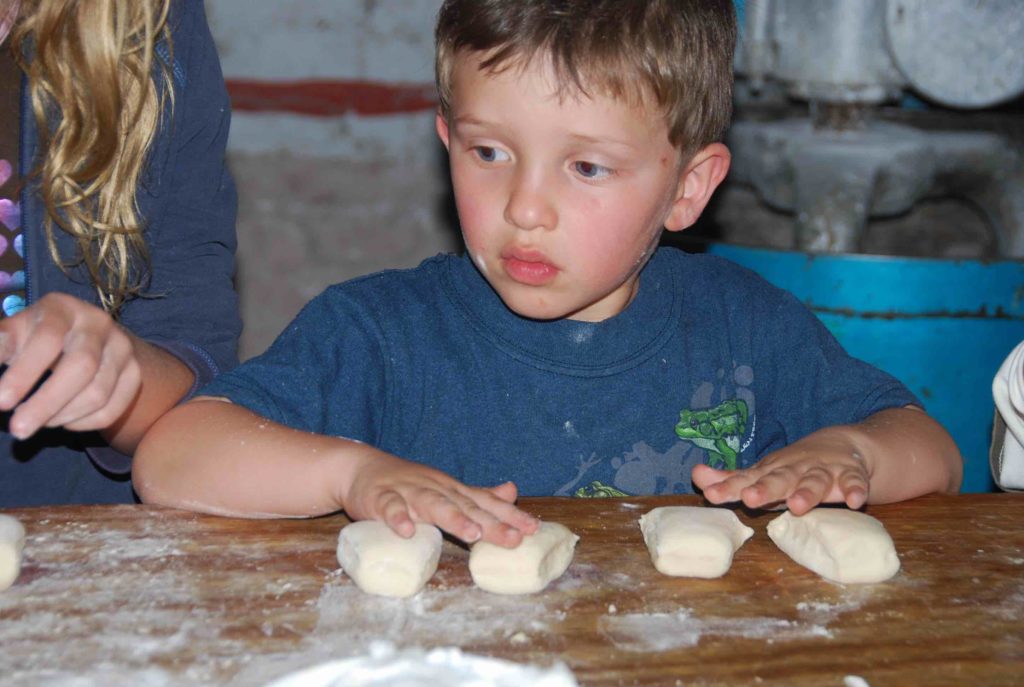
After the kids shaped them into thick, flattened rounds, Félix demonstrated how to make the sugar cover.
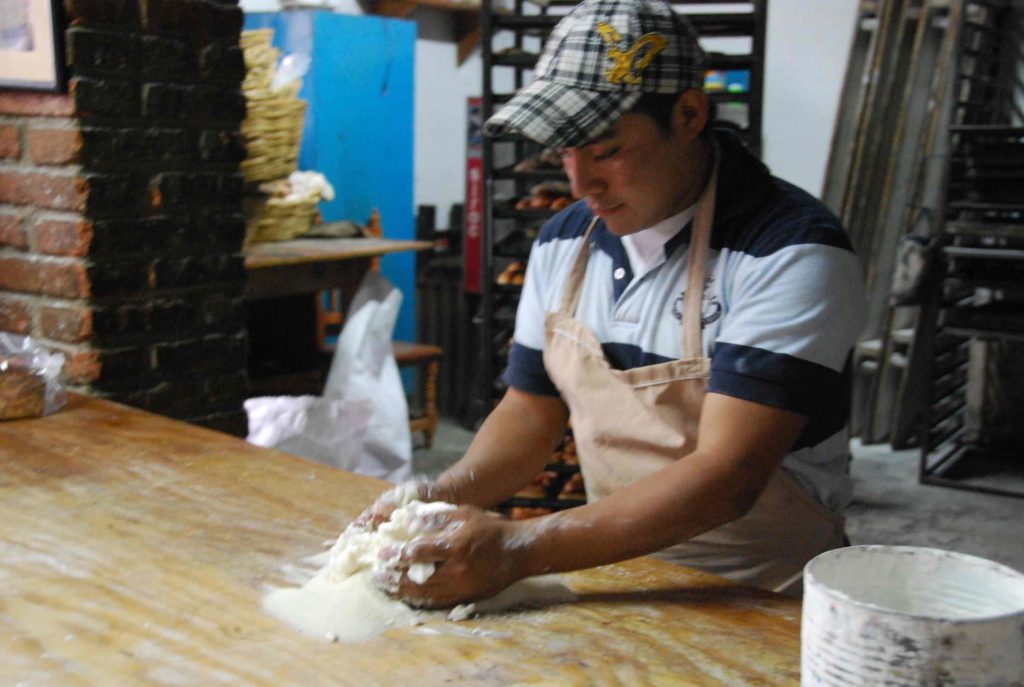
Which was even more fun to make, because all you do is mix together flour, confectioners sugar and a heaven-full of butter with your hands until soft.
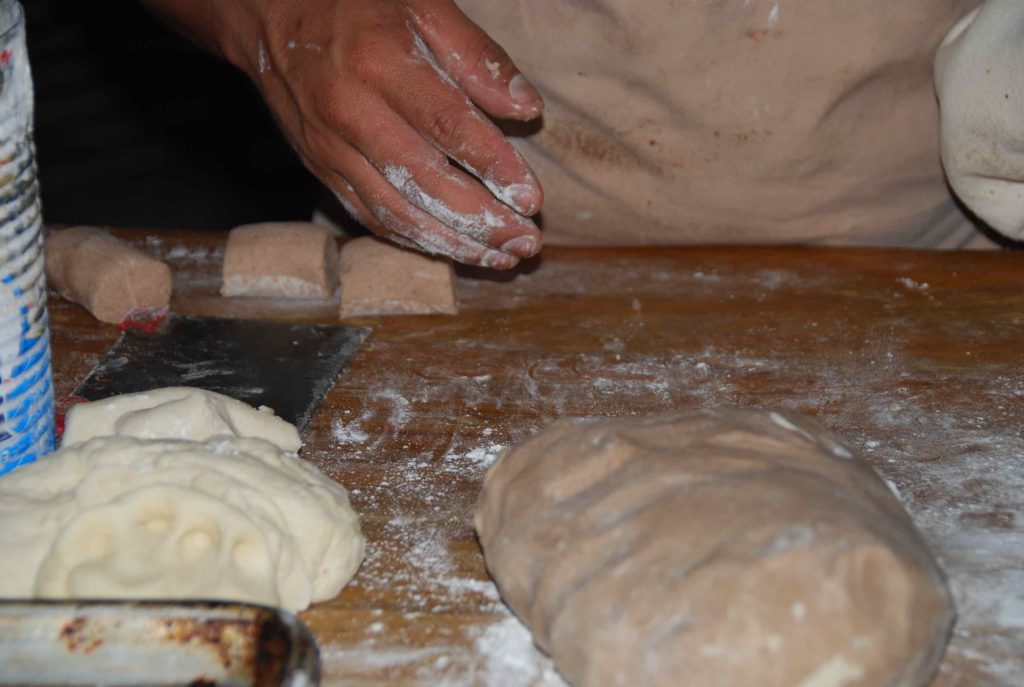
Half that sugar cover is mixed with cocoa powder, because some people prefer their conchas chocolatey… Or some little cooks like to throw in something else to get even more messy…
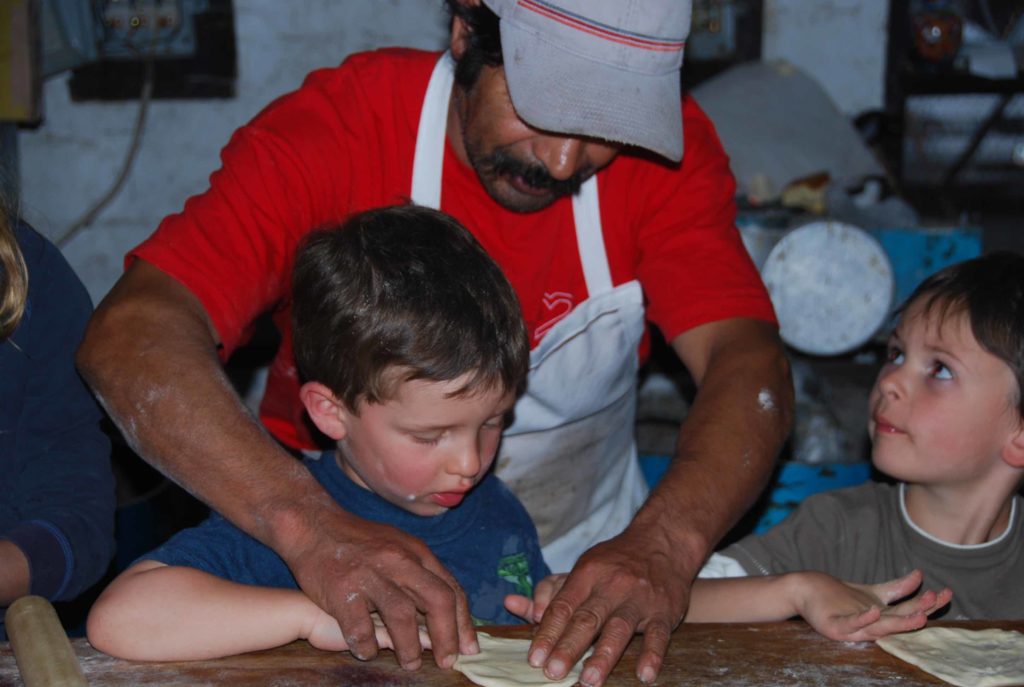
The kids were concentrated on making that sugar cover just about right before layering it on the concha dough flattened balls… Félix’s bakery assistant was so kind and patient with the kids.
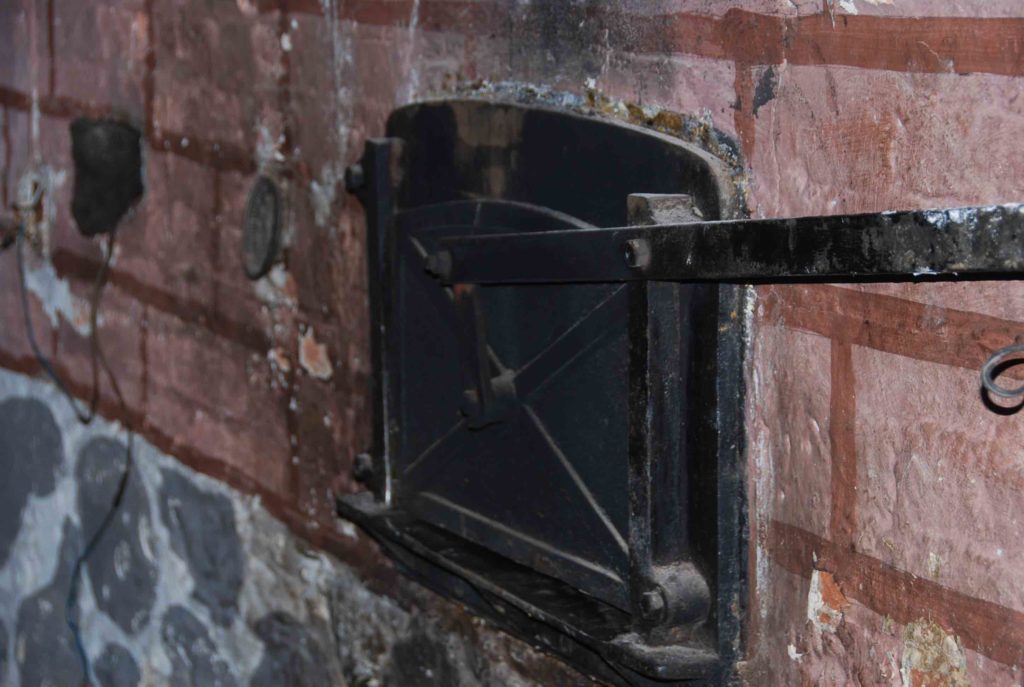
Now that is one charming looking oven. The moment I saw it, I imagined how just about anything baked in there has to taste so yummy…
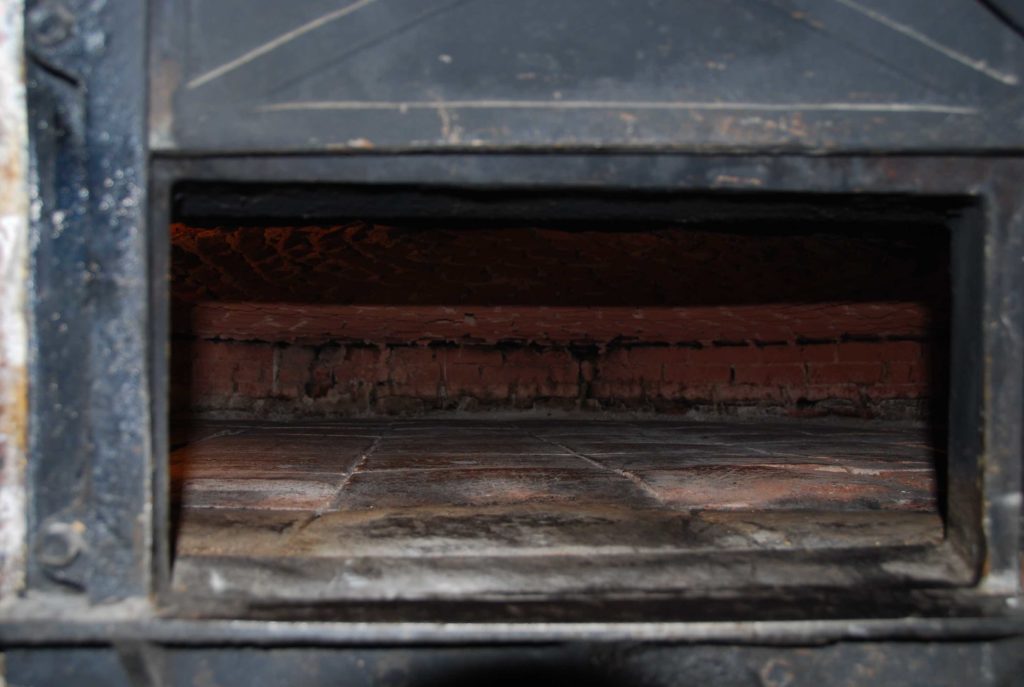
With the bottom made out of aged earthenware tiles and brick walls…
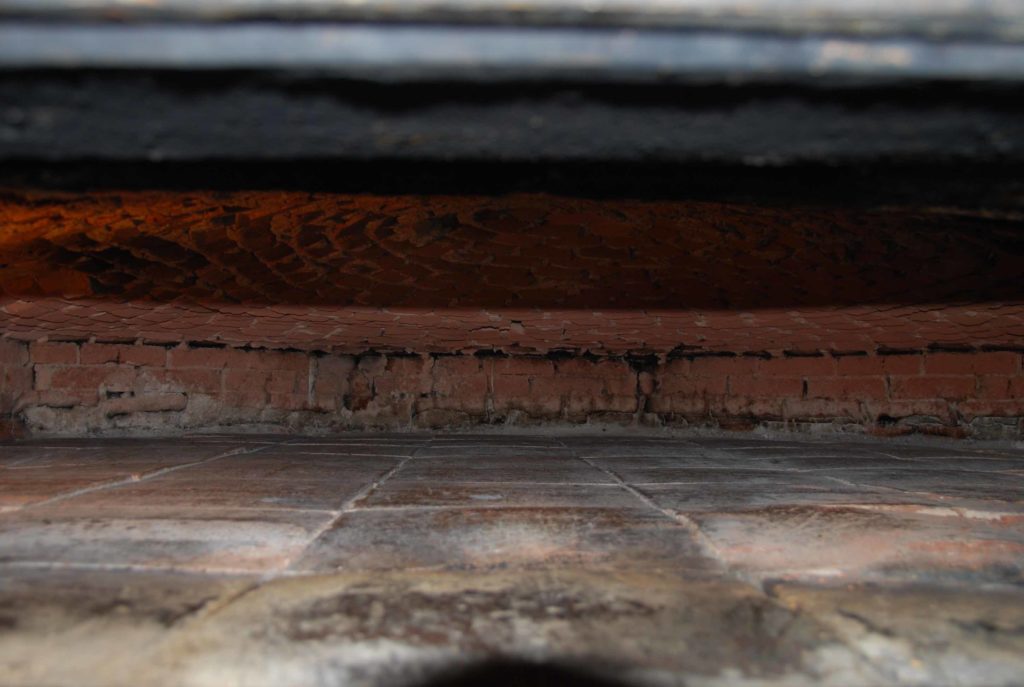
And one can just dream of how many conchas can fit in there…. 500, 1000, 2000… Each one to be eaten in just…. two…. big…. bites.
And some whole milk on the side.
Conchas
Ingredients
For the dough:
- 14 ounces or 2 3/4 generous cups all-purpose flour
- 2 eggs
- 1 egg yolk
- 1/4 teaspoon salt
- 2 packets (7 grams or .25oz each) dry active yeast
- 1/2 cup lukewarm water
- 4 ounces unsalted butter or vegetable shortening at room temperature
- 5 ounces or 3/4 cup sugar
For the sugar topping:
- 1/3 pound all-purpose flour
- 1/3 pound confectioners' sugar
- 5 ounces unsalted butter or vegetable shortening, at room temperature, diced
- 1 1/2 tablespoons cocoa powder if you want to make half be chocolate flavored
- Extra butter or vegetable shortening to assemble the conchas
Instructions
- Add the all purpose flour to the mixer, set with the dough hook, along with the eggs, egg yolk, and salt. Start the mixer over low speed. Meanwhile, add the active dry yeast to 1/2 cup lukewarm water and stir until creamy and well dissolved. Stir it into the flour mixture, and let it continue beating, now over medium speed, for about 3 to 4 minutes.
- Incorporate the unsalted butter, keep on beating for 3 to 4 minutes more. Lastly, add the sugar and continue mixing for another 3 to 4 minutes or until the dough is gooey, sticky, elastic and very smooth.
- With a spatula, push the dough into a mixing bowl greased with butter or vegetable shortening, cover it with a kitchen towel and place it in the warmest area of your kitchen, where there are no wind currents. Let the dough rise for at least 2 and up to 8 hours. It should have doubled in size.
- For the sugar topping, place the flour and confectioners' sugar in a large bowl. Using your hands, incorporate the diced butter into the flour mixture. Mix and knead it until its smooth and homogeneous. If you want half the conchas to be chocolate flavored, separate half of the mixture in another bowl, and mix it very well with the cocoa powder. Cover the sugar toppings with plastic wrap so they won't dry out.
- To assemble the conchas, grease thick baking sheets with butter or vegetable shortening and keep your hands greased. They will need to be greased for you to shape the dough. Using your hands, make about 2 inch balls with dough. Then, slightly press them flat, as in a thick disk, but not a tortilla. Leave about 2 inches in between each of the conchas so they will have room to expand.
- Once your baking sheet is filled with the dough disks, cover them with the sugar coating. To do this, grab about a tablespoon of sugar coating, plain or chocolate. Make a round ball with your hands and then flatten it thin, like a tortilla. Place it on top of the dough disk and slightly press down. It should cover most of the surface.
- If you have a concha mold, press it on the sugar topping. If you don't have one, cut through the sugar topping making round lines or any decoration that reminds you of a shell.
- Leave the prepared conchas in a warm area of your kitchen, uncovered, and let them rise again, for about 2 to 4 hours.
- Preheat the oven to 350 degrees. Place the conchas in the oven for about 20 to 24 minutes, until the conchas are slightly browned around the edges and look fluffed up.

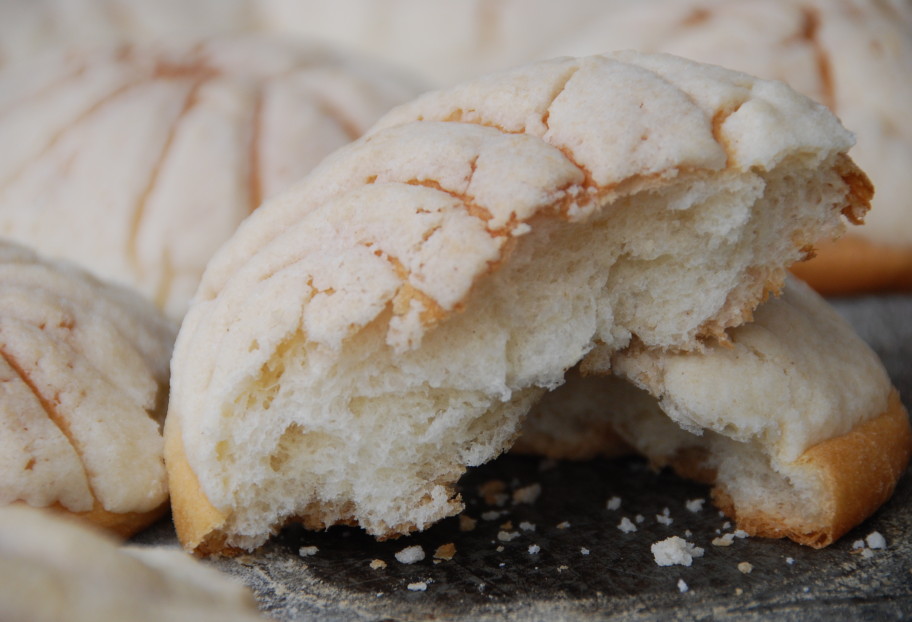
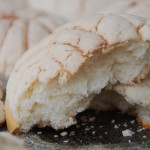
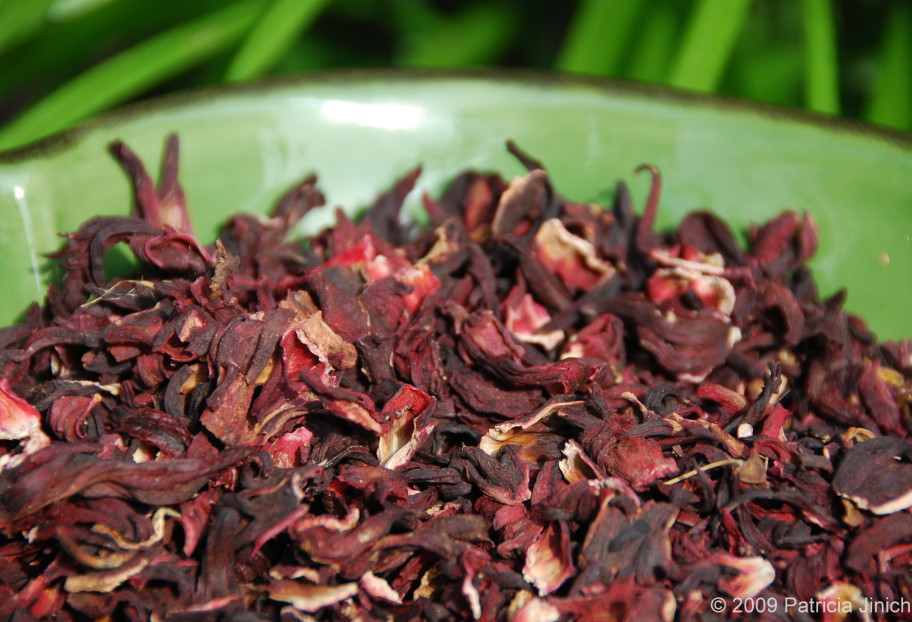
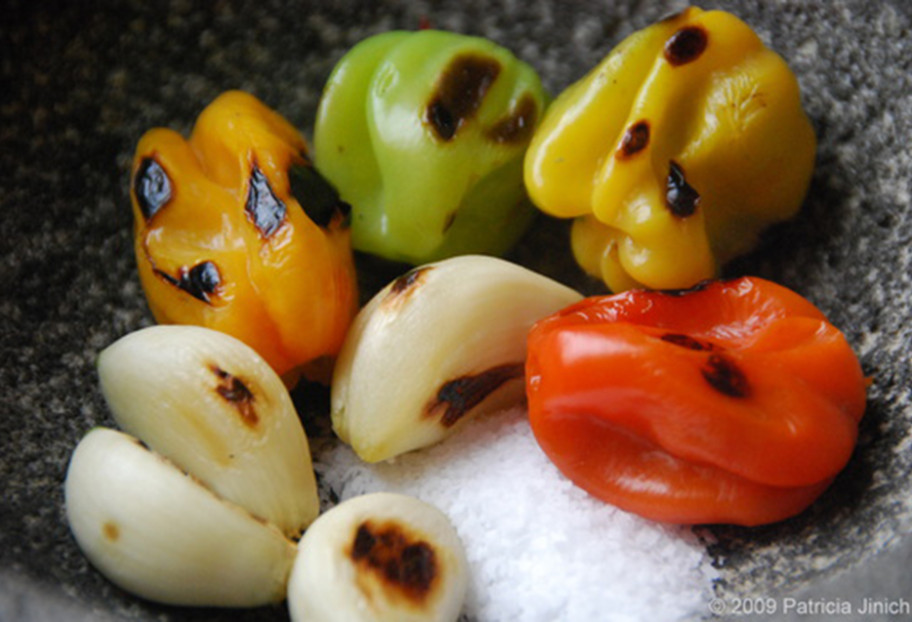
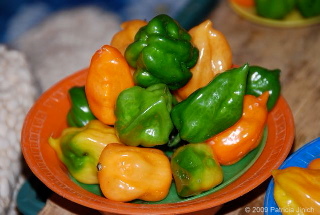

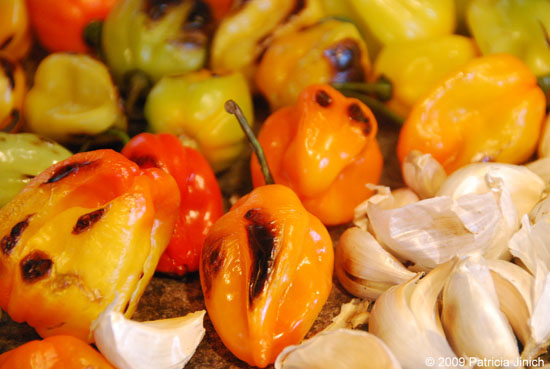
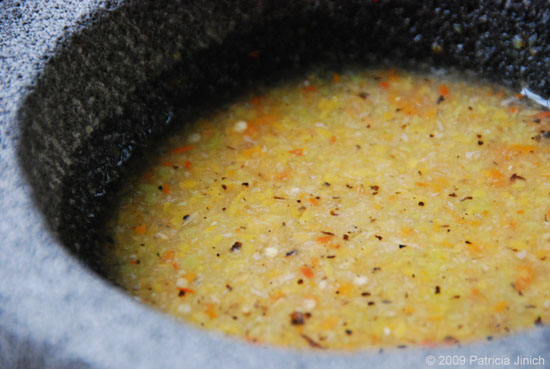
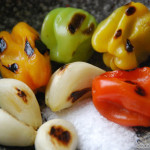
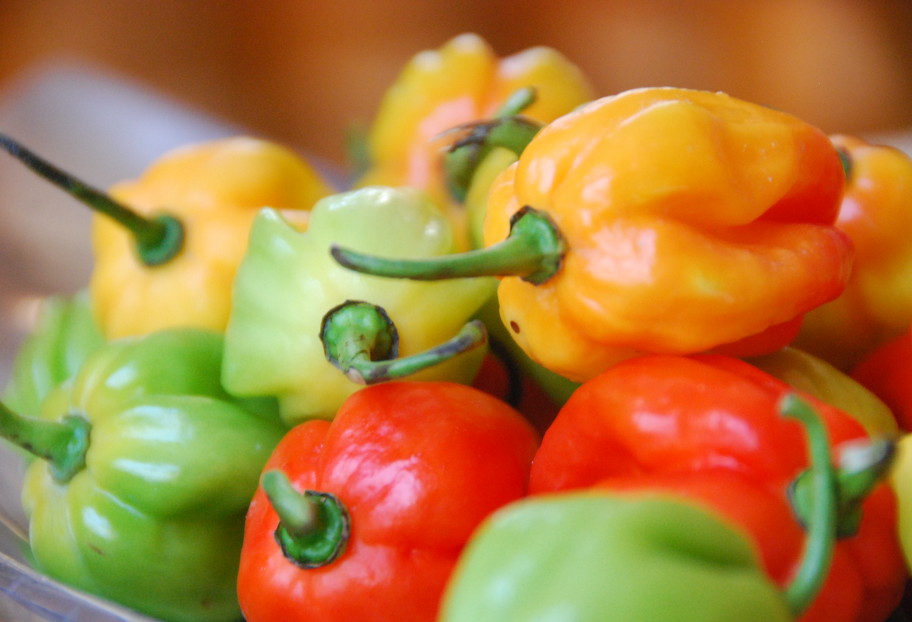
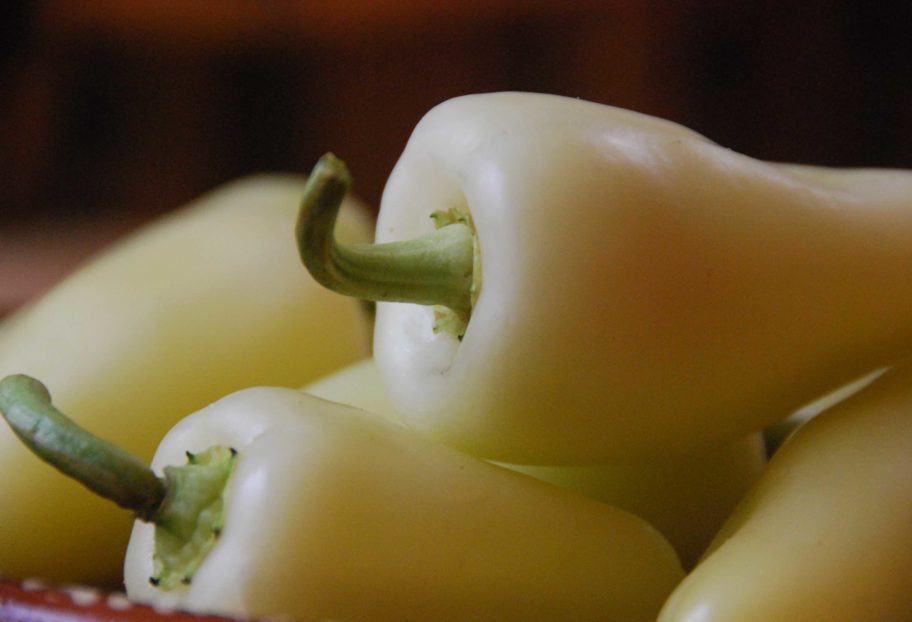
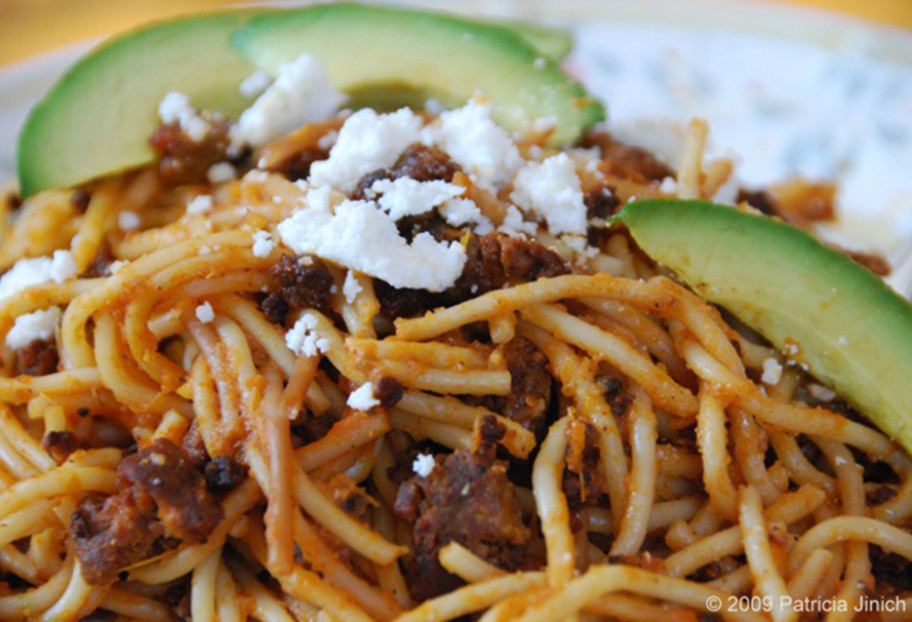
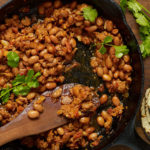
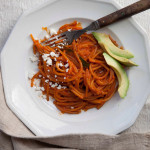
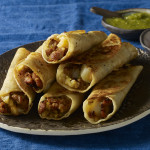
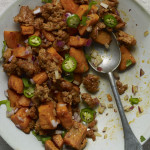
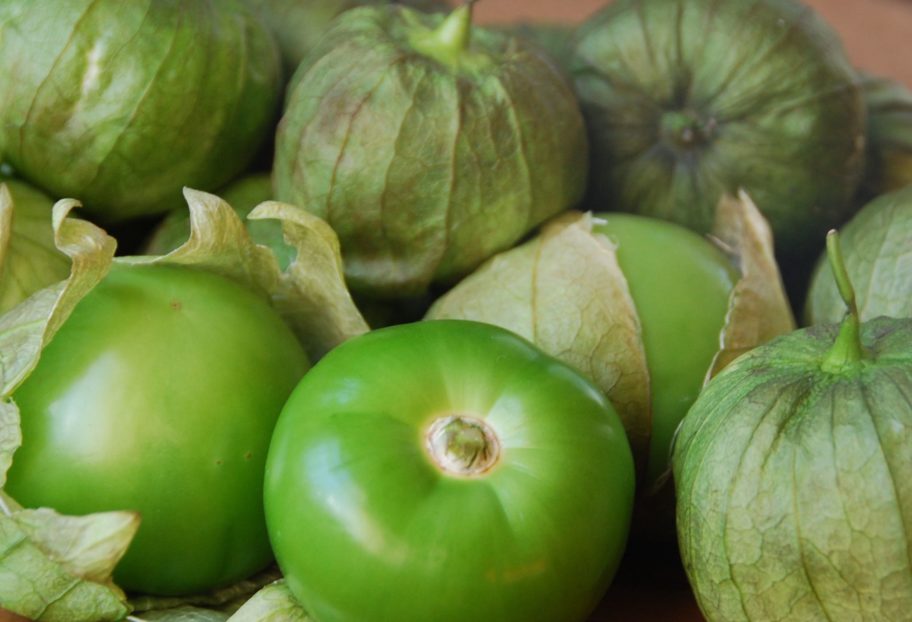
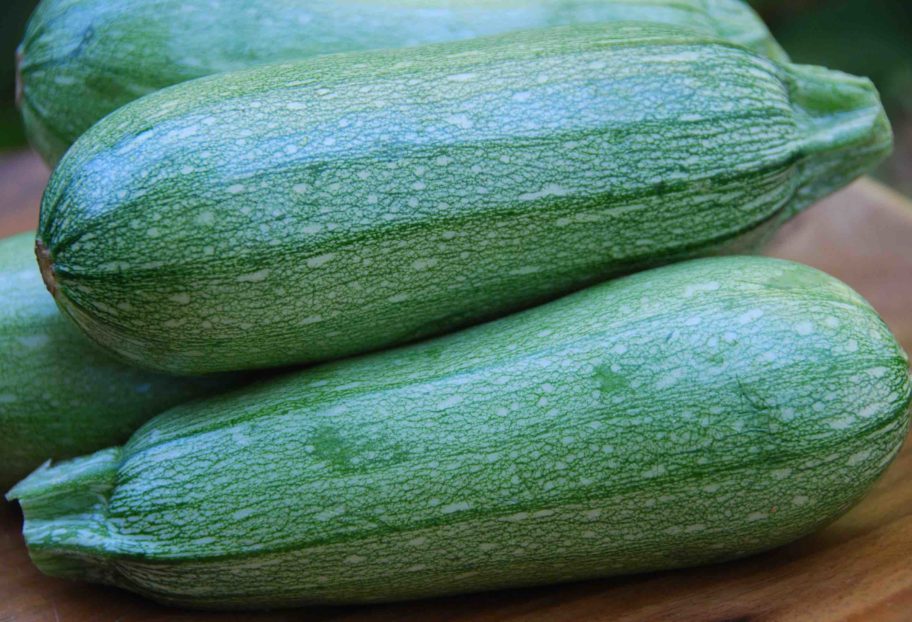
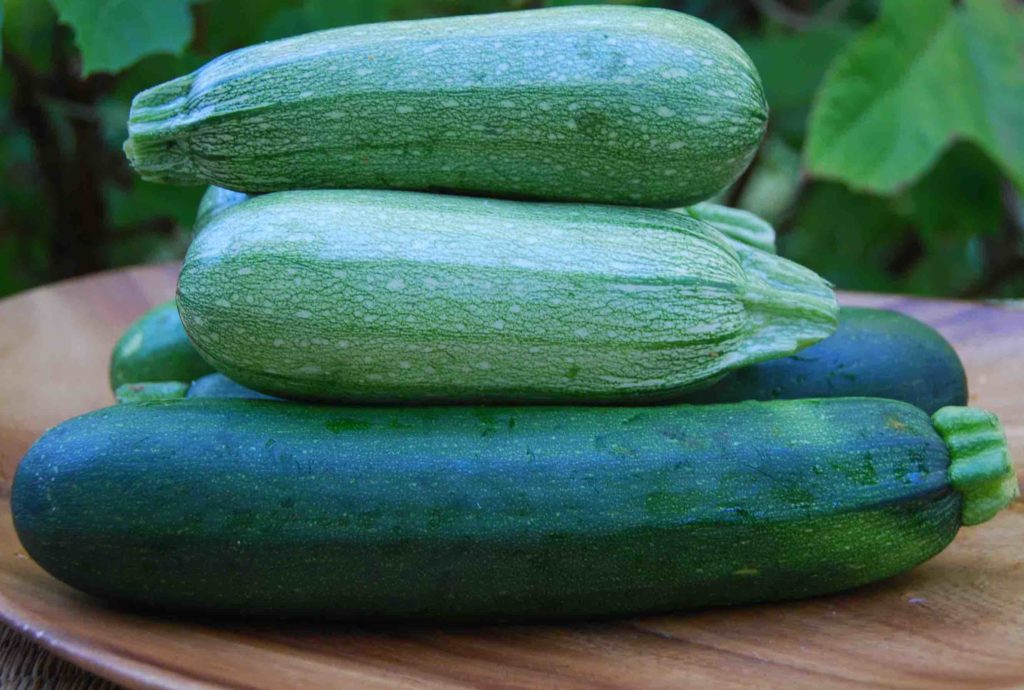

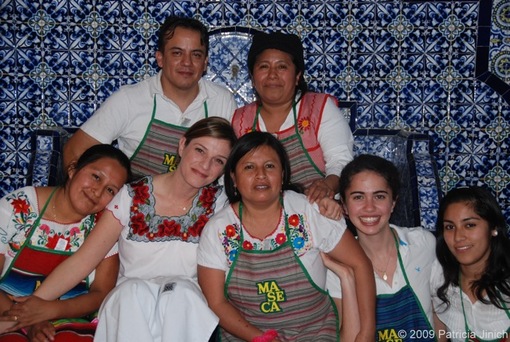


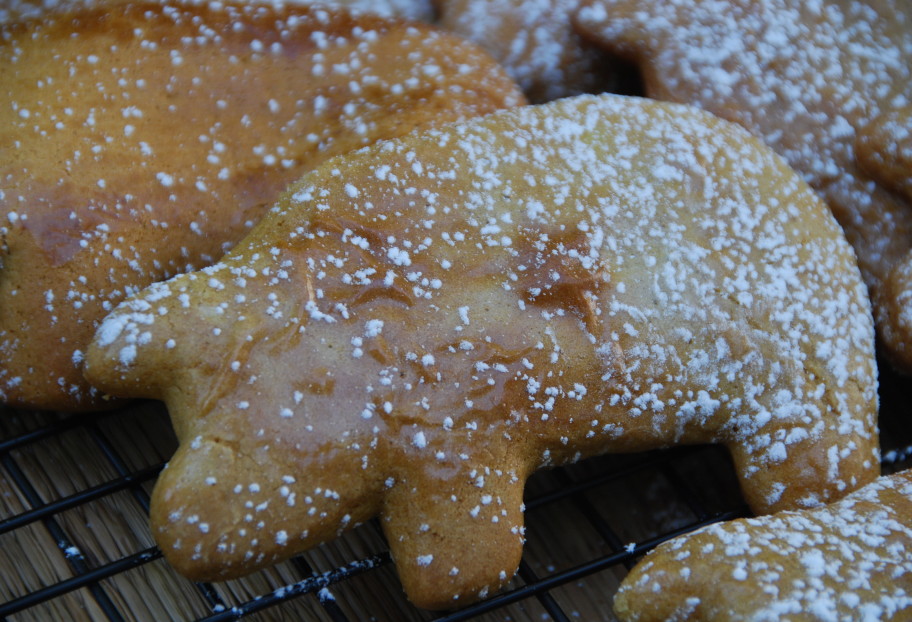

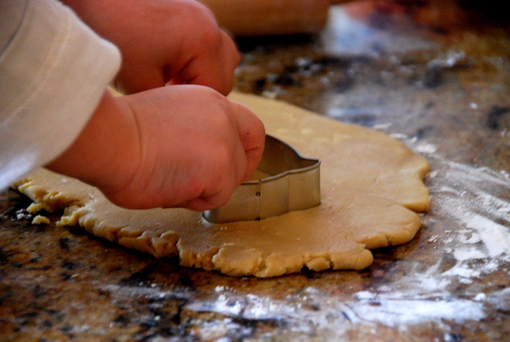 After they sneak away and find ways to eat some dough, they have a hard time waiting for it to harden in the refrigerator, so it can be easy to roll it out and give it fun shapes.
After they sneak away and find ways to eat some dough, they have a hard time waiting for it to harden in the refrigerator, so it can be easy to roll it out and give it fun shapes.